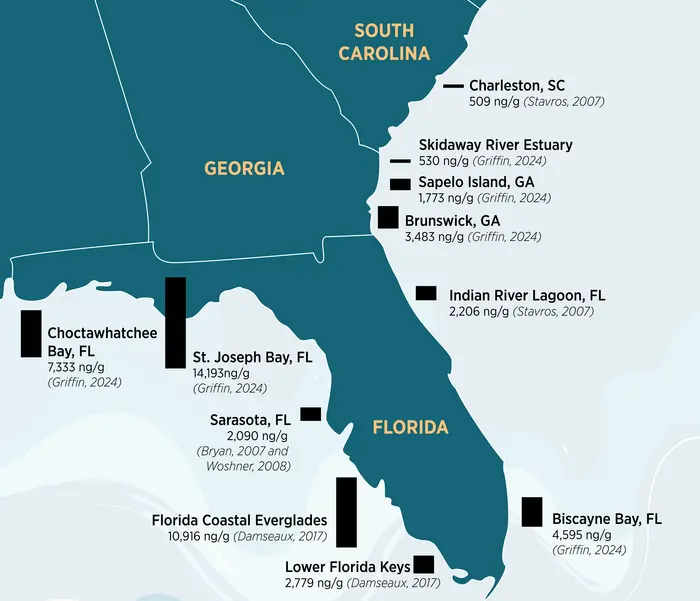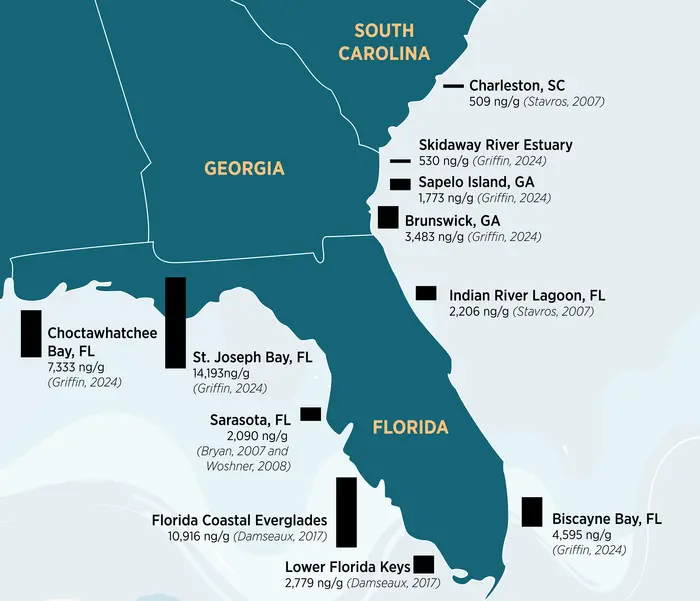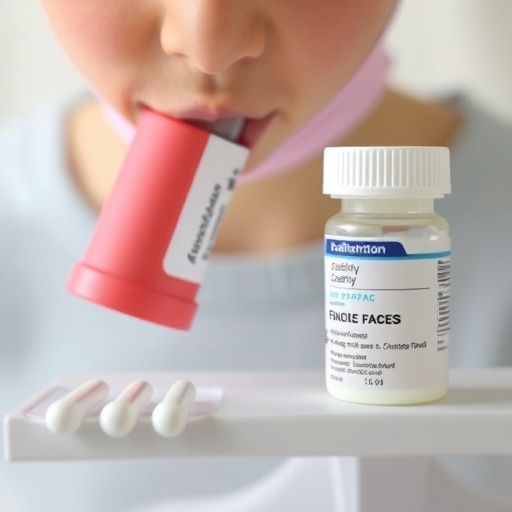In a study with potential implications for the oceans and human health, scientists reported elevated mercury levels in dolphins in the U.S. Southeast, with the greatest levels found in dolphins in Florida’s St. Joseph and Choctawhatchee Bays.
Dolphins are considered a “sentinel species” for oceans and human health because, like us, they are high up in the food chain, live long lives, and share certain physiological traits with humans. Some staples of their diet, such as spot, croaker, weakfish and other small fish, are most vulnerable to mercury pollution and are also eaten by people.

Credit: N. Hanacek/NIST
In a study with potential implications for the oceans and human health, scientists reported elevated mercury levels in dolphins in the U.S. Southeast, with the greatest levels found in dolphins in Florida’s St. Joseph and Choctawhatchee Bays.
Dolphins are considered a “sentinel species” for oceans and human health because, like us, they are high up in the food chain, live long lives, and share certain physiological traits with humans. Some staples of their diet, such as spot, croaker, weakfish and other small fish, are most vulnerable to mercury pollution and are also eaten by people.
The study, which appeared in the journal Toxics, drew no conclusions about Florida and Georgia residents’ mercury levels or the potential health risks to humans. It did, however, cite previous research by a different group of researchers that found a correlation between high mercury levels in dolphins in Florida’s Indian River Lagoon and humans living in the area.
“As a sentinel species, the bottlenose dolphin data presented here can direct future studies to evaluate mercury exposure to human residents” in the Southeast and other potentially affected areas in the United States, the authors of the study in Toxics wrote.
According to the U.S. Environmental Protection Agency (EPA), fish is part of a healthy diet and “for most people, the risk from eating fish and shellfish is not a health concern.” But the agency also says that “some groups of people, such as pregnant people, children, the elderly or those with weakened immune systems, are at a greater health risk of adverse health effects. Additionally, some individuals are at a higher risk for adverse health effects simply because they eat a lot of fish.”
In marine mammals such as dolphins, mercury toxicity can lead to reproductive failure, behavioral changes and even death, according to a statement last year from the Minamata Convention on Mercury, a 2017 global agreement informed by the scientific consensus on mercury.
Though some mercury occurs naturally in the environment, mercury pollution results largely from burning fossil fuels and industrial processes such as mining, cement production and chemical manufacturing.
Bacteria in the water convert mercury into methylmercury, which is then absorbed or eaten by small fish. It then gets passed up the food chain to species that consume these fish, such as dolphin.
For the study in Toxics, the scientists analyzed 175 skin samples collected from common bottlenose dolphins between 2005 and 2019.
The samples were gathered from multiple estuaries in Florida and Georgia including St. Joseph, Choctawhatchee and Biscayne Bays in Florida and the Skidaway and Turtle/Brunswick river estuaries and Sapelo Island in Georgia. The scientists measured mercury in dolphin skin, which directly relates to the methylmercury in their other tissues and organs.
“NIST has been involved with dolphin health assessment and biopsy studies since 2002,” said Colleen Bryan, a research biologist and a co-author of the study. “We’ve helped standardized testing protocols and collection and storage methods, so any measurements taken are highly accurate and comparable across studies.”
The researchers found that the mercury levels in St. Joseph Bay, where dolphins averaged 14,193 nanograms of mercury per gram (ng/g) in skin, were the highest they recorded.
In an interview, Mackenzie Griffin, the study’s lead author and now a biologist at the National Oceanic and Atmospheric Administration (NOAA), said industrial activities may be partially responsible for the levels in St. Joseph Bay. She also said that the bay isn’t routinely flushed out by an influx of fresh water from other waterways, which would help reduce mercury levels.
In their research, the authors cited previously published studies by others showing that dolphins in the Charleston, South Carolina, area had the lowest average levels — 509 ng/g — while dolphins in the Florida Coastal Everglades had the highest — 10,916 ng/g.
According to NIST’s Bryan, Charleston Harbor benefits from tidal flows that flush out mercury when the tide goes out.
In the Everglades, leaves on the mangrove trees absorb the mercury in the atmosphere and then fall into the water, decomposing and releasing the toxin. The waterlogged, low-oxygen peat soils there are a rich habitat for the bacteria that convert the chemical into methylmercury.
“Our research adds to other studies that have consistently shown elevated levels of mercury in dolphins in the Southeast,” said Bryan. “We hope it will lead to a better understanding of what’s happening in our oceans.”
The following agencies and institutions contributed to the study in Toxics: NOAA, the National Marine Mammal Foundation, the Marine Science and Nautical Training Academy, Savannah State University in Georgia, Florida International University, the University of Miami and the Sarasota Dolphin Research Program.
Journal
Toxins
DOI
10.3390/toxics12050327
Method of Research
Experimental study
Subject of Research
Animals
Article Title
Spatial Variation in Mercury Accumulation in Bottlenose Dolphins (Tursiops spp.) in Southeastern U.S.A.
Article Publication Date
30-Apr-2024





